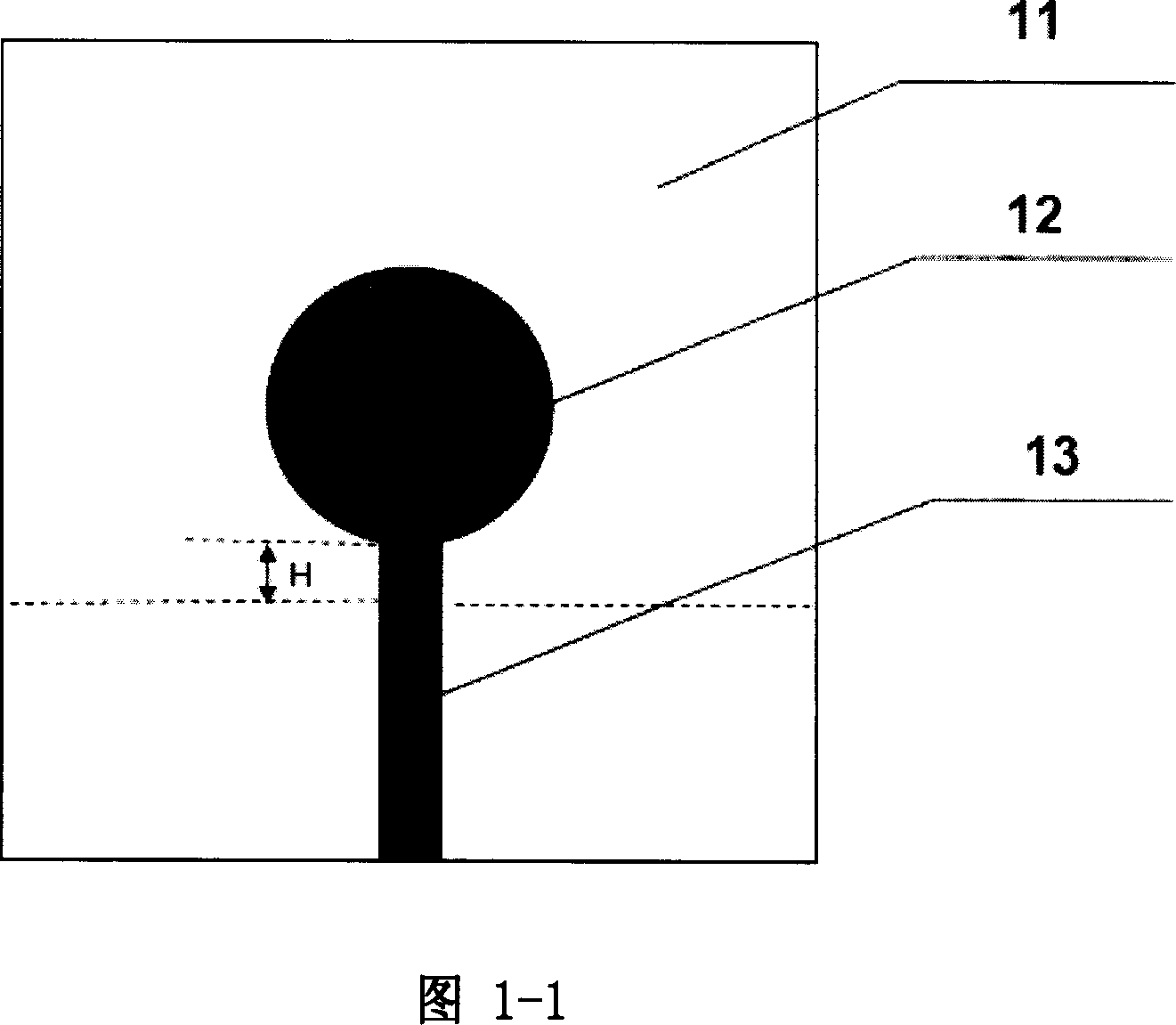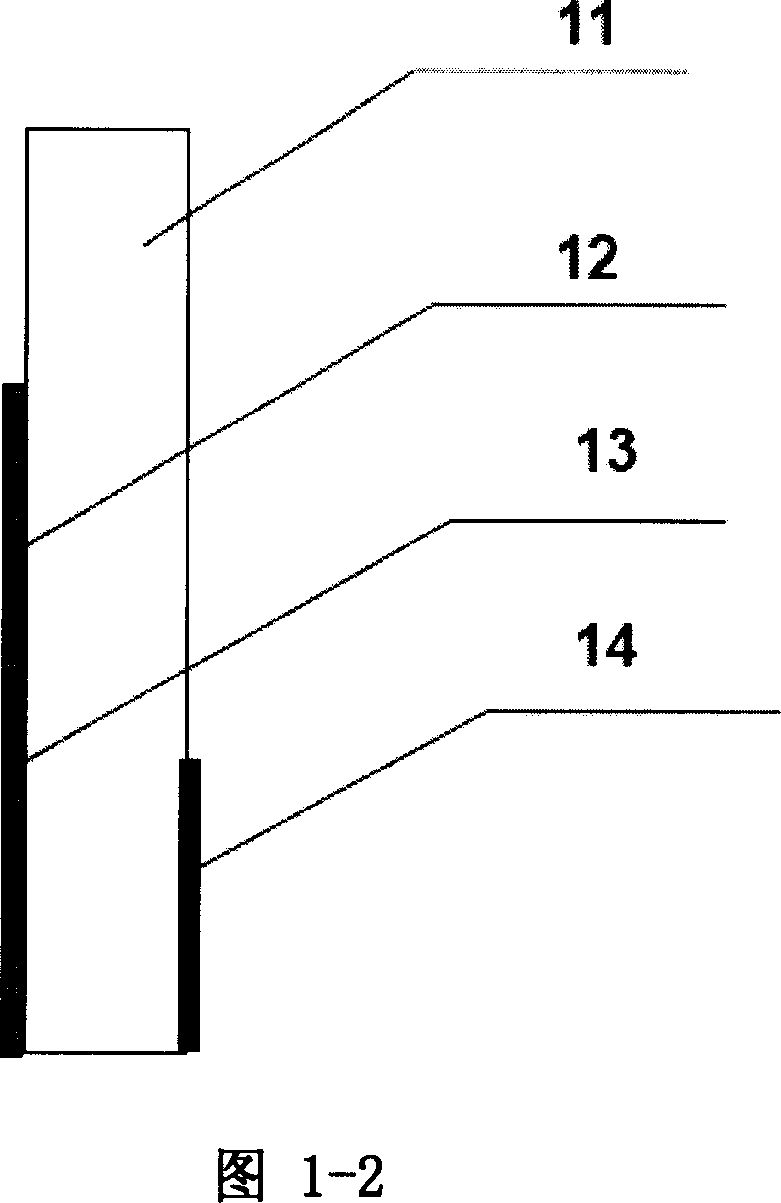Super wide band antenna
A technology of ultra-wideband antenna and microstrip line, which is applied in the field of communication, can solve the problems of increasing the volume and weight of the antenna, interfering with the working performance of the ultra-wideband system, and being uneconomical and practical, and achieve the effect of filtering out interference signals
- Summary
- Abstract
- Description
- Claims
- Application Information
AI Technical Summary
Problems solved by technology
Method used
Image
Examples
Embodiment Construction
[0018] Referring to FIG. 1 , it shows a schematic structural diagram of an existing ultra-wideband antenna unit. The antenna is a monopole antenna, including a circular metal piece 12 (radius is about 10 mm) attached to the top surface of the dielectric base plate 11 . The material of the dielectric bottom plate 11 is a material with a relatively high dielectric coefficient, such as a material with a relative dielectric coefficient of 10.2. The bottom surface of the dielectric chassis is partially covered with metal 14 as a ground. The edge of the circular metal sheet 12 is connected with a section of microstrip line 13 as a feeder. Connect an external signal source through this feeder as the input terminal. H represents the distance between the front end of the microstrip line 13 and the ground 14, and this distance is adjusted to make the antenna achieve impedance matching. The working frequency of the monopole antenna covers the working frequency range of the ultra-wideb...
PUM
 Login to View More
Login to View More Abstract
Description
Claims
Application Information
 Login to View More
Login to View More - Generate Ideas
- Intellectual Property
- Life Sciences
- Materials
- Tech Scout
- Unparalleled Data Quality
- Higher Quality Content
- 60% Fewer Hallucinations
Browse by: Latest US Patents, China's latest patents, Technical Efficacy Thesaurus, Application Domain, Technology Topic, Popular Technical Reports.
© 2025 PatSnap. All rights reserved.Legal|Privacy policy|Modern Slavery Act Transparency Statement|Sitemap|About US| Contact US: help@patsnap.com



